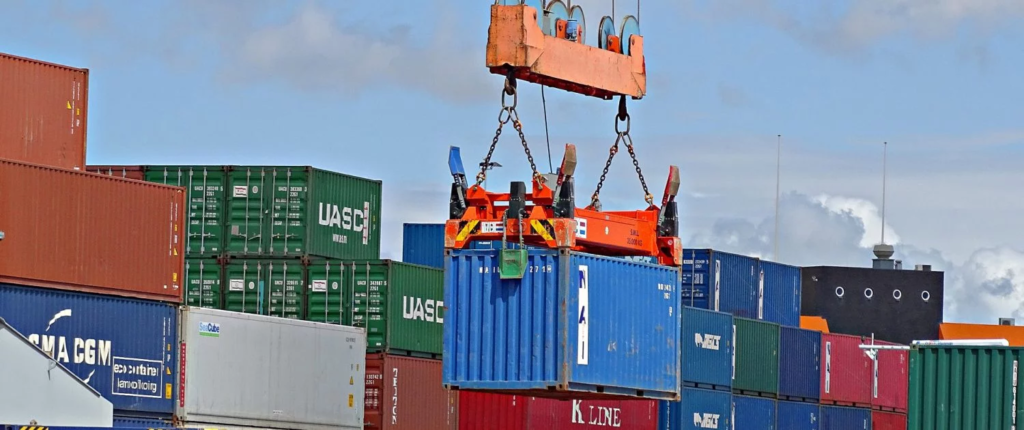- What Is an Inland Bill of Lading
- عنوان بارنامه زمینی به چه چیزی اطلاق میگردد؟
- Key Takeaways
- نکات کلیدی بارنامه زمینی
- Understanding an Inland Bill of Lading
- شناخت بارنامه زمینی
What Is an Inland Bill of Lading
An inland bill of lading [بارنامه زمینی] is a contract signed between a shipper and a transportation company (carrier) for the overland transportation [معنی: انتقال زمینی و ریلی] of goods. An inland bill of lading serves as both the carrier’s receipt to the shipper and the carriage contract. The document specifies the details of the goods being transported.
ترجمه متن تجاری – بازرگانی
عنوان بارنامه زمینی به چه چیزی اطلاق میگردد؟
بارنامۀ زمینی قراردادی بین فرستنده و شرکت حملونقل (متصدی باربری) است که به منظور حمل کالا به شکل زمینی امضاء میشود. بارنامه زمینی را میتوان هم رسیدی در نظر گرفت که متصدی باربری به فرستنده میدهد و هم به منزله قرارداد حمل تلقی نمود. مشخصات کالاها برای حملونقل بر روی این سند میآید.
Key Takeaways
An inland bill of lading is a contract between a shipper and a transportation company for the movement of goods overland.
An inland bill of lading is used to carry goods overland and oftentimes to the port of shipping where the goods can be transported internationally.
Inland bills of lading are used primarily to cover transportation via rail, road, or inland waterway.
Details such as the description of the goods, their value, their origin, destination, and the terms of their transportation are included in an inland bill of lading.
The bill of lading serves as the receipt for the owner of the goods as well as the carrier’s title for the purposes of transportation.
If the goods are to be shipped overseas, an additional document known as an “ocean bill of lading” is required.
If goods are transported by air instead, there will be an air waybill, which is used for both domestic and international air transportation.
ترجمه متن تجاری – بازرگانی
نکات کلیدی بارنامه زمینی
بارنامه زمینی قراردادی بین فرستنده و شرکت حملونقل است که به منظور جابجایی کالا به صورت زمینی امضاء میشود.
بارنامۀ زمینی برای حمل کالاها به شکل زمینی استفاده دارد و اکثر اوقات مقصد نهایی این حملونقل زمینی به بندرگاه کشتیرانی است، یعنی جایی که بتوان محموله را در سطح بینالملل جابجا کرد.
بارنامههای زمینی اساساً در حملونقل ریلی، جادهای و آبراهههای داخلی استفاده دارند.
اطلاعاتی مانند شرح کالا؛ مبلغشان؛ مبدأ و مقصدشان؛ و شرایط حملونقلشان در بارنامه زمینی قید میشود.
بارنامه زمینی را میتوان هم رسیدی برای مالک کالا در نظر گرفت و هم به منزله سند مالکیت متصدی باربری به منظور حملونقل تلقی نمود.
چنانچه کالاها را از طریق دریا جابجا کنند، سند دیگری به نام بارنامه دریایی لازم است.
در عوض اگر کالاها به شکل هوایی جابجا شود، راهنامه هوایی لازم است، که هم برای مقاصد داخلی و هم مقاصد خارجی حملونقل هوایی کاربرد دارد.

Understanding an Inland Bill of Lading
An inland bill of lading is often the first transportation document issued for an international shipment and is used to transport goods over land via rail, road, or inland waterway, to the point at which the exporter’s international carrier can place it on a ship.
It is the contract between the owner of the goods and the carrier, stating in detail a description of the goods, their value, their origin, destination, and the terms of their transportation. It will state the particular vehicle [معنی: وسیله حمل] the goods are to be transported on and how freight charges [معنی: کرایه حمل] are to be paid. The bill of lading serves as the receipt for the owner of the goods as well as the carrier’s title for the purposes of transportation.
Because it is concerned with domestic overland transportation, the inland bill of lading will not be consigned [یعنی: واگذار کردن، تسلیم کردن] directly to the foreign buyer of the goods but rather to a third party. This is usually the international carrier of the goods, but consignment [معنی: واگذاری، امانت سپاری] to another third party, such as a warehouse [معنی: انبار], freight forwarder, or packaging company, before it reaches the international carrier is possible.
If consigned to such a third party, that party will, in turn, need to consign it to the international carrier. If an inland bill of lading is non-negotiable, it may only be delivered to the named consignee, but if it is negotiable, then the carrier in possession of [معنی: چیزی را تصرف داشتن، چیزی را در اختیار داشتن] the bill of lading may re-route the shipment.
ترجمه متن تجاری – بازرگانی
شناخت بارنامه زمینی
بارنامه زمینی اغلب اوقات اولین سند حملونقلی است که برای حملونقلهای بینالملل صادر میکنند و این سند در حملونقل کالاها از طریق ریل، جاده و یا آبراهههای داخلی* کاربرد دارد- به مقصد مکانی که باربری بینالملل به نمایندگی از طرف صادرکننده بتواند بار را بر روی کشتی بگذارد.
بارنامه قرارداد بین مالک کالا و متصدی باربری است و شرحی از کالاها؛ مبلغشان؛ مبدأ و مقصدشان؛ و شرایط حملونقلشان به تفصیل در آن آمده است. در این بارنامه نام و مشخصات وسیلۀ نقلیه حامل کالا را قید میکنند و نحوۀ پرداخت کرایه بار نیز مشخص میشود. بارنامه را میتوان هم به منزله رسیدی برای مالک کالا در نظر گرفت و هم حکم سند مالکیت متصدی باربری به منظور حملونقل دارد.
از آنجایی که بارنامۀ زمینی برای حملونقلهای داخلی کاربرد دارد، از واگذاری مستقیم این سند به خریدار خارجی امتناع میکنند و در عوض آن را به نام یک شخص ثالث صادر میکنند. این شخص ثالث معمولاً باربری بینالملل است، ولیکن واگذاری بارنامه به شخص ثالث دیگری همچون انباردار، کارگزار، یا شرکت بستهبندی قبل از رسیدن کالا به باربری بینالملل نیز ممکن است.
چنانچه واگذاری به چنین شخص ثالثی انجام گیرد، چنین فردی، به نوبه خود، لازم است محموله را به باربری بینالمللی واگذار کند. چنانچه بارنامه زمینی غیرقابل انتقال باشد، این بارنامه را تنها به شخصی واگذار میکنند که از او نام او بردهاند، ولیکن اگر بارنامه قابل انتقال و معامله باشد، متصدی باربری با تصرف بارنامه میتواند مسیر حملونقل را تغییر بدهد.
منبع: https://www.investopedia.com/terms/i/inland-bill-of-lading.asp




